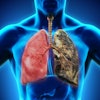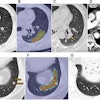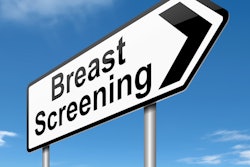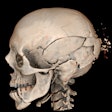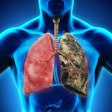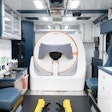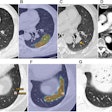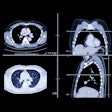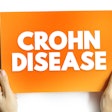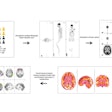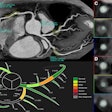Could the use of preventive health tests such as breast and colorectal cancer screening boost uptake of lung cancer screening (LCS) with low-dose CT (LDCT)? It's possible -- but strategic interventions are needed, researchers suggest.
A team led by Alexandra Potter of Massachusetts General Hospital in Boston found that breast cancer and colorectal cancer screening use was "slightly lower among LCS-eligible persons compared with LCS-ineligible persons," which may reflect "a greater burden of barriers to accessing preventive health care in the LCS-eligible population, further highlighting the need for interventions." The results were published April 2 in JAMA.
The U.S. Preventive Services Task Force (USPSTF) recommends annual LCS screening with LDCT for individuals between the ages of 55 and 50 and a smoking history of 30 pack years to 20 pack years. But despite the fact that the pool of people eligible for this screening has broadened, uptake of the exam remains low, at only 18% in 2022. One theory for the low adoption rate is that "tobacco use is more common in adults of low socioeconomic status and with mental illness, leading some to believe that individuals eligible for LCS may be less receptive to cancer screening," the investigators wrote.
The team investigated whether the use of other preventive services among adults eligible for LCS could offer insight into their accessibility for outreach. The study included information from 212,393 participants between the ages of 50 and 79 from the 2022 US Centers for Disease Control and Prevention Behavioral Risk Factor Surveillance System (BRFSS) dataset; of these, 28,483 were eligible for LCS according to the 2021 USPSTF criteria.
This group was also classified by whether it met the USPSTF's 2016 breast cancer screening and 2021 criteria for colorectal cancer screening. Potter and colleagues assessed the proportion of individuals who had the screening tests for which they qualified and evaluated the use of breast cancer and colorectal cancer screening among all BRFSS participants eligible for each test, comparing those eligible for LCS versus those who were not. (The team also established two dual eligibility cohorts, one for breast cancer screening and LCS [BCS/LCS, 11,147 individuals] and another for colorectal cancer screening and LCS [CCS/LCS 24,172 individuals].)
| LCS screening uptake by type of eligibility cohort | |||
|---|---|---|---|
| Type of cohort | BCS | CCS | LCS |
| BCS/LCS | 65% | -- | 17% |
| CCS/LCS | -- | 64.7% | 17.5% |
| LCS-eligible participants who had never undergone LCS | 60.2% | 58.7% | -- |
The group reported that when sociodemographic factors were analyzed, uptake of breast cancer screening and colorectal cancer screening was three times higher than that of LCS in all subgroups. It also found that the use of both breast cancer screening and colorectal cancer screening was lower among participants eligible for LCS than among those ineligible for LCS.
"In [our] analysis, use of BCS and CCS among individuals eligible for LCS was nearly fourfold higher than use of LCS," the researchers noted. "Even among LCS-eligible persons who had never undergone LCS, 59% to 60% had undergone other cancer screening tests."
The study results suggest that "many people eligible for LCS are accessible to outreach and receptive to receiving preventive health care services," and underscore a need for "interventions to increase awareness about LCS and to reduce barriers -- including difficulties assessing LCS eligibility (due to the use of age and multiple smoking history requirements) and challenges accessing LCS clinics -- that prevent individuals from undergoing screening," they concluded.
Potter's and colleagues' complete study can be found here.


